Abandoned History: Oldsmobile's Guidestar Navigation System and Other Cartography (Part IV)

General Motors spent a lot of time and money in the development of TravTek GPS. As we learned in our last installment, the comprehensive (if clunky) navigation system used a touchscreen, had live traffic information, and could even make phone calls. Installed in 100 Toronados used in the greater Orlando area for an entire year, GM, AAA, and various government parties were eager to see just how useful the system was and if it was worthwhile. Narrator: It wasn’t. Let’s find out why.
After the TravTek experiment was over, the U.S. Department of Transportation spent some taxpayer dollars to produce eight different in-depth reports on the system’s general nature, usefulness, and driver acceptance. There was a good amount of data available, as over 4,000 people piloted the 100 Toronados during their tenure as rental and leased vehicles. There were seven different inquiries the government wanted to answer.
The questions were: Did the system work? Did drivers save time and avoid congestion via the live traffic data? Will drivers actually use TravTek? How effective was the voice guidance versus a silent map with turn-by-turn displays?
The remaining three questions were: Was TravTek actually safe to use? Could the system benefit travelers who don’t have the system in their car? And finally, would people actually be willing to pay for the TravTek package? The finalized main report on TravTek was published in January 1996 and is 89 pages long (PDF available here). We’ll summarize some of the highlights.
In the DoT report, it was found TravTek users took less time to plan their trips than conventional (paper map) methods, with a time of less than 1.5 minutes for a complete route plan. Using a map took about five minutes. Also faster was time spent en route, as the digital guidance meant directions were easily at hand. Drivers using maps took five minutes longer to complete an identical journey than with TravTek. Overall, trip planning time with TravTek was reduced by 75 percent, and driving time by 25 percent.
Drivers found TravTek easier to use than a map, and suggested their in-car workload was lighter. However, there was no relationship found between TravTek usage and driver safety. Despite TravTek being an advanced whiz-bang technology, users did not find it difficult to use. On average, the system was mastered within three destinations. Unsurprisingly, younger users found the system easier to use than older ones.
All drivers were given a questionnaire after their TravTek experience. The respondents generally felt TravTek did not interfere with their driving, and assisted them to pay more attention to driving via voice guidance and navigation features. Almost all users agreed the navigation would be useful for long trips.
Though the voice guidance was rudimentary, users much preferred the visual aids of the TravTek to be accompanied by voice guidance. That being said, most loved the system in any case. Asked to rate TravTek on a scale of 1 to 6 with 6 being the highest, the system (with map and directional guidance) was rated as a 5 when voice guidance was off. When it was turned on and all three features were used, the median rating was a 6.
Less favorably rated were the quality of the voiceover (which was pretty bad), and the touchscreen navigation interface. One could assume the touchscreen was rated more poorly since it was the most cutting edge part of the navigation process. Fast forward a couple decades, and the general public loves a touchscreen. Some things just take time.
Users were also asked to indicate how much they’d pay for TravTek. In general, the figure was about $1,050 ($2,339 adj.) for a projected 50 percent market penetration. That meant about half of people would be willing to purchase a TravTek at that price point. The dollar figure was slightly higher when the question was framed as an option on a brand new car, where users pegged TravTek’s value at $1,300 ($2,896 adj.).
That $1,300 figure was repeated when users were asked how much they’d pay to add the system as an aftermarket add-on. A low figure when one considered the extra systems, screens, and labor of installation of such a complicated system. Finally, the study found a projected 50 percent market penetration at $28 ($62 adj.) if TravTek were an add-on for a weekly car rental.
Those figures above identified a big problem: Costs. There was no way to make the TravTek profitable for that kind of money considering the data, private and state coordination, quantity of information, and mapping required. It was an enormous amount of effort just to cover the Orlando area, with lots of time-sensitive AAA information within the TravTek system.
Keeping in mind the 100 test cars required their own 24/7 support center staffed with live service representatives, consider the staffing needs if TravTek were launched nationwide. Not to mention the ancillary systems and sensors required for each car, as well as the mandatory car phone connection. In 1992, a car phone would’ve cost over $1,000 to install, plus monthly service and per-minute fees. Data and systems requirements and the public’s lack of perceived value meant the TravTek never made it to full-scale production.
But there was another, more defined issue as well. As mentioned in the last installment, the government was a roadblock to early '90s consumer GPS devices. The U.S. military was the owner and manager of satellite GPS, and kept the good technology for itself. Though the military allowed civil access to GPS from the 1980s, the civilian system was hampered and much less accurate than the military version. The reasoning was always a simple one: National security.
The poor accuracy was part of why the Toronados with TravTek needed a giant antenna and additional sensors at each wheel to help pinpoint the car’s location. This was the case until 1996, when President Clinton announced a new policy directive that would see U.S. GPS assets managed nationally. The announcement in 1996 was followed with two new civilian GPS signals to increase accuracy and reliability in 1998.
The military’s selective availability of GPS signals lasted until May of 2000, at which point civilian users had the same accuracy as the military. Since then, GPS has been considered a “global utility.” The GPS wall that came down in 1996 was great timing for General Motors, as in the interim between TravTek and the Clinton Administration they’d developed a new GPS system: Guidestar! We’ll pick up there next time.
[Images: GM, YouTube, YouTube]
Become a TTAC insider. Get the latest news, features, TTAC takes, and everything else that gets to the truth about cars first by subscribing to our newsletter.

Interested in lots of cars and their various historical contexts. Started writing articles for TTAC in late 2016, when my first posts were QOTDs. From there I started a few new series like Rare Rides, Buy/Drive/Burn, Abandoned History, and most recently Rare Rides Icons. Operating from a home base in Cincinnati, Ohio, a relative auto journalist dead zone. Many of my articles are prompted by something I'll see on social media that sparks my interest and causes me to research. Finding articles and information from the early days of the internet and beyond that covers the little details lost to time: trim packages, color and wheel choices, interior fabrics. Beyond those, I'm fascinated by automotive industry experiments, both failures and successes. Lately I've taken an interest in AI, and generating "what if" type images for car models long dead. Reincarnating a modern Toyota Paseo, Lincoln Mark IX, or Isuzu Trooper through a text prompt is fun. Fun to post them on Twitter too, and watch people overreact. To that end, the social media I use most is Twitter, @CoreyLewis86. I also contribute pieces for Forbes Wheels and Forbes Home.
More by Corey Lewis
Latest Car Reviews
Read moreLatest Product Reviews
Read moreRecent Comments
- 2ACL I have a soft spot for high-performance, shark-nosed Lancers (I considered the less-potent Ralliart during the period in which I eventually selected my first TL SH-AWD), but it's can be challenging to find a specimen that doesn't exhibit signs of abuse, and while most of the components are sufficiently universal in their function to service without manufacturer support, the SST isn't one of them. The shops that specialize in it are familiar with the failure as described by the seller and thus might be able to fix this one at a substantial savings to replacement. There's only a handful of them in the nation, however. A salvaged unit is another option, but the usual risks are magnified by similar logistical challenges to trying to save the original.I hope this is a case of the seller overvaluing the Evo market rather than still owing or having put the mods on credit. Because the best offer won't be anywhere near the current listing.
- Peter Buying an EV from Toyota is like buying a Bible from Donald Trump. Don’t be surprised if some very important parts are left out.
- Sheila I have a 2016 Kia Sorento that just threw a rod out of the engine case. Filed a claim for new engine and was denied…..due to a loop hole that was included in the Class Action Engine Settlement so Hyundai and Kia would be able to deny a large percentage of cars with prematurely failed engines. It’s called the KSDS Improvement Campaign. Ever hear of such a thing? It’s not even a Recall, although they know these engines are very dangerous. As unknowing consumers load themselves and kids in them everyday. Are their any new Class Action Lawsuits that anyone knows of?
- Alan Well, it will take 30 years to fix Nissan up after the Renault Alliance reduced Nissan to a paltry mess.I think Nissan will eventually improve.
- Alan This will be overpriced for what it offers.I think the "Western" auto manufacturers rip off the consumer with the Thai and Chinese made vehicles.A Chinese made Model 3 in Australia is over $70k AUD(for 1995 $45k USD) which is far more expensive than a similar Chinesium EV of equal or better quality and loaded with goodies.Chinese pickups are $20k to $30k cheaper than Thai built pickups from Ford and the Japanese brands. Who's ripping who off?


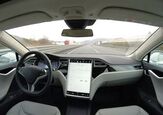




















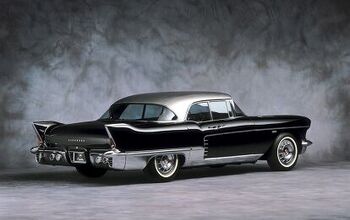
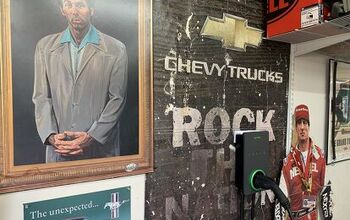
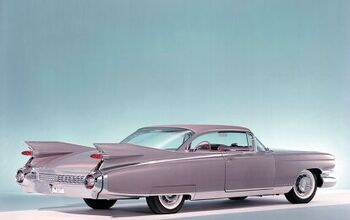






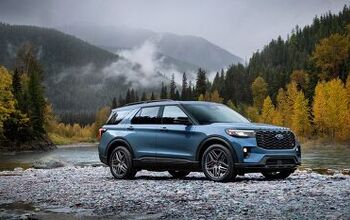

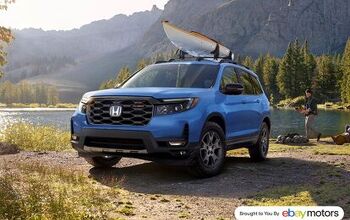
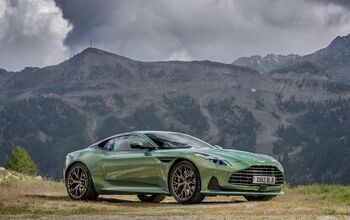
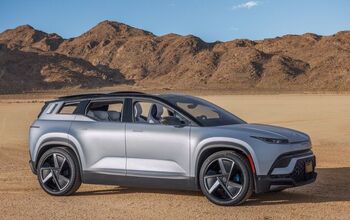

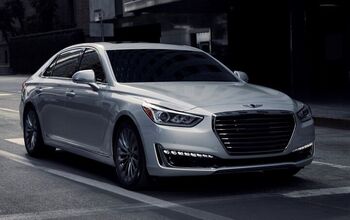
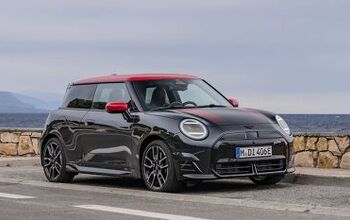

Comments
Join the conversation
As a land surveyor I clearly remember the GPS changes in the '90's. Suddenly, we could use differential GPS and get accuracy down to a couple of hundredths. It forever altered the industry.
One of the biggest mistakes GM has ever made was to drop the Oldsmobile product line. The three Oldsmobiles I owned were my favorite cars of all time, though I believe it just got some real competition from Korea. I finally have a faux El Camino.